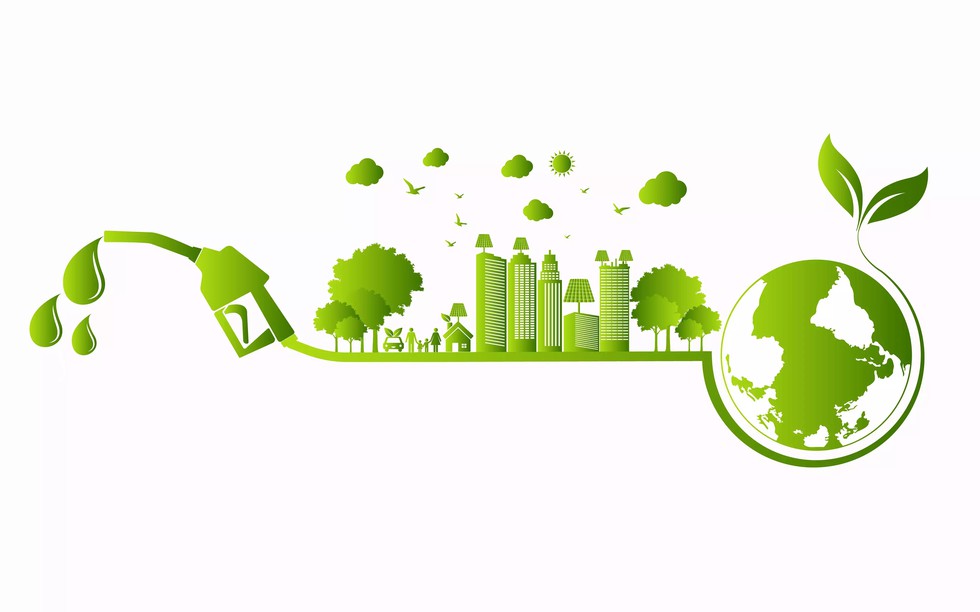Context:
Recently, India has made significant strides towards achieving its ambitious target of 20% ethanol blending (20% ethanol and 80% gasoline) in petrol by 2025-26.
Ethanol Blended Programme (EBP):
- It was launched in January 2003 to promote the use of alternative and environment-friendly fuels and to reduce dependence on imports for energy needs.
- In 2006, The Ministry of Petroleum & Natural Gas directed the Oil Marketing Companies (OMCs) to sell 5% Ethanol Blended Petrol subject to commercial viability as per Bureau of Indian Standards (BIS) specifications.
- The Government has a 10% blending target (E10) for mixing ethanol with petrol by 2021-22 and a 20% blending target (E20) by 2025-26 and 30% by 2029-30.
- Government policy supports using maize, surplus rice, and damaged grains for ethanol.
Status of ethanol production capacity:
- Goal: Achieve 20% ethanol blending by 2025-26, requiring 1,000 crore litres of ethanol annually.
- Current Blending: Increased to 13%-15% in 2023 from around 8% in 2021.
- Investment: Sugar industry invested ₹40,000 crore in capacity expansion, adding 92 crore litres in just two years.
Government Roadmap: NITI Aayog plans for achieving ethanol blending targets stipulated that:
- The capacity of sugarcane-based distilleries should increase from 426 crore litres in 2021 to 760 crore litres in 2026.
- The grain-based distilleries should increase from 258 in 2021 to 740 crore litres in 2026.
- Total capacity in December 2023: 1,380 crore litres, some 875 crore litres capacity from sugarcane and 505 crore from foodgrains, nearly achieving the 2026 target.
Significance of the Ethanol Blending Programme:
- Strengthening Energy Security: Reduces India’s dependence on imported fuel, mitigating risks from global events like the Russia-Ukraine war or OPEC oil cuts.
- Environmental Benefits: Lowers greenhouse gas emissions and could save up to $4 billion annually by decreasing oil imports.
- Economic Impact: Supports rural development by providing a stable market for crops. Vehicle manufacturers are preparing for the 2025 E20 fuel deadline, though existing vehicles may need modifications.
Maize Production:
- India is a major maize producer, but domestic consumption outpaces production.
- Maize imports in 2023-24 were $39 million, with a spike to $103 million from April to June 2024.
NITI Aayog estimates 4.8 million hectares of additional maize cultivation needed to meet the 20% ethanol target.
- Impact of Maize Diversion: Likely to drive up maize prices, affecting the poultry sector (47%), livestock feed (13%), and starch (14%).
Sugarcane and Ethanol Production:
- Sugarcane produces sugarcane juice, B-heavy molasses, and C-heavy molasses; B-heavy and C-heavy molasses are used for ethanol production.
- Ethanol Pricing: Depends on the sugar content of the input.
2022-23 Fuel Ethanol Source:
- 63% from B-heavy molasses.
- 33% from molasses.
- Government Restrictions (December 2023): Limited diversion of sugarcane juice and B-heavy molasses to ethanol over concerns of depleting sugar stocks.
Concerns with Higher Ethanol Blending in India:

- Food Security: Increased maize use for ethanol production has led to higher imports and prices, impacting the poultry sector (47%), starch (14%), and livestock feed (13%). India’s maize yield is low at 3-4 tonnes per hectare.
- Water Usage: Expanding sugarcane cultivation for ethanol will require an additional 400 billion litres of water, potentially threatening essential food grain crops and raising sustainability concerns.
- Sugarcane Production: Government restrictions on using sugarcane for ethanol due to sugar stock concerns may disrupt the supply chain, though experts believe current sugar stocks are sufficient.
Initiatives of Government towards Ethanol Blending
- “Roadmap for Ethanol Blending in India 2020-25”A “Roadmap for Ethanol Blending in India 2020-25” was released 2021 which lays out a detailed pathway for achieving 20% ethanol blending.
- Pradhan Mantri JI-VAN (Jaiv Indhan- Vatavaran Anukool fasal awashesh Nivaran) Yojana aims to provide financial support to Integrated Bioethanol Projects using lignocellulosic biomass and other renewable feedstock.
National Policy on Biofuels” in 2018: It was notified by the Ministry of New and Renewable Energy in 2018 in order to promote the biofuels in the country.
- The Policy categorises biofuels as “Basic Biofuels” viz. First Generation (1G) bioethanol & biodiesel and “Advanced Biofuels” – Second Generation (2G) ethanol, Municipal Solid Waste (MSW) to drop-in fuels, Third Generation (3G) biofuels, bio-CNG etc. to enable extension of appropriate financial and fiscal incentives under each category.

